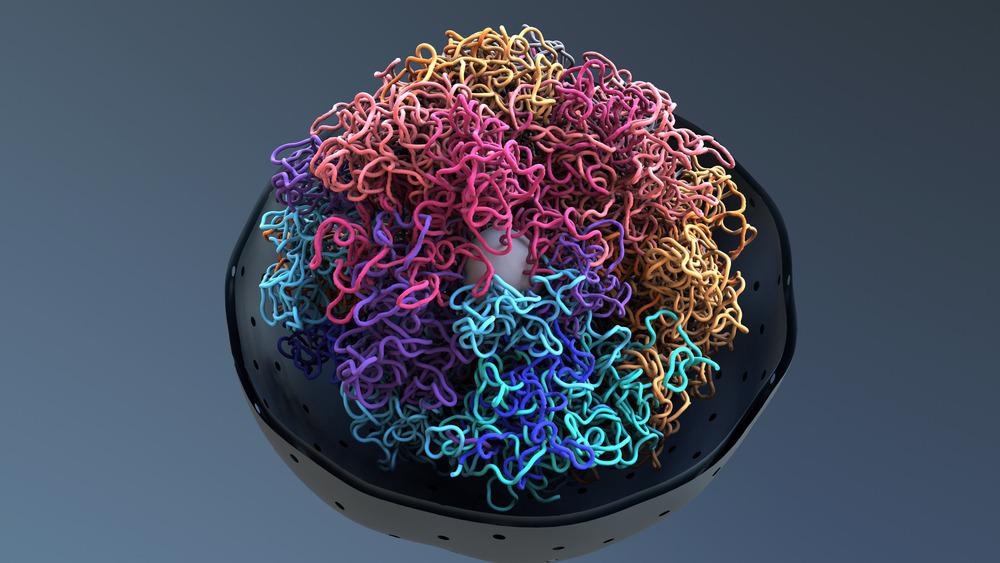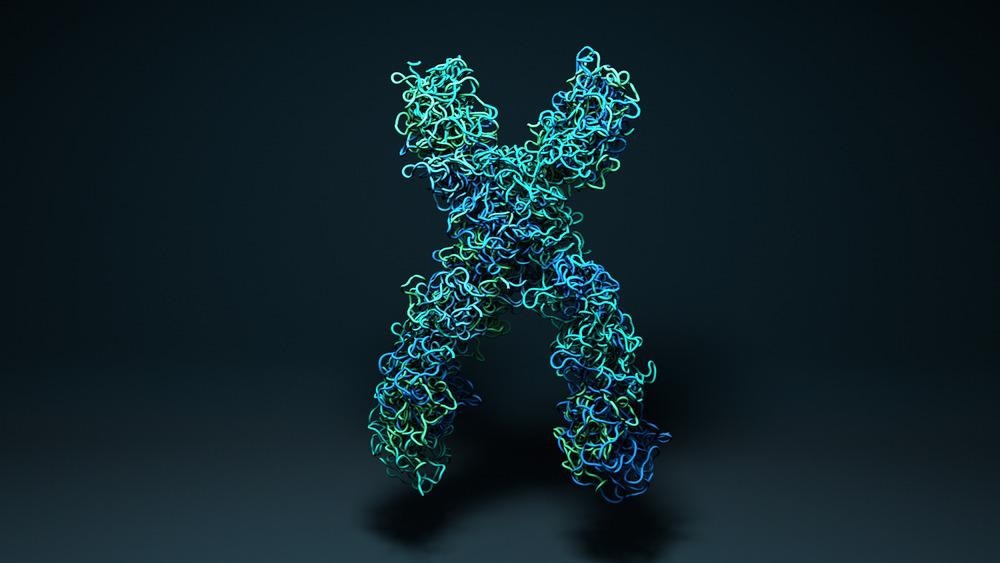Theories on how the genome is structured as chromatin have changed over the years. Uncovering the true nature of chromatin architecture is vital to furthering our understanding of its function, and, therefore, is fundamental to the future potential applications of genetic research.

Image Credit: Design_Cells/Shutterstock.com
Early views of chromatin architecture that first emerged in the 1970s assumed that nucleosome arrays were uniformly regular and folded, whereas modern developments propose a heterogenous array organization and diverse modes of folding. Here, we discuss the story of our changing views on chromatin architecture, from the famous ‘beads on a string’ theory to the currently held idea of heterogeneous nucleosome array arrangements and folding of the chromatin fiber.
Early views of chromatin architecture
The ‘beads on a string’ theory is the classic interpretation of chromatin architecture. It proposes that nucleosomes are uniformly regular. This theory is attributed to pioneering studies being conducted in the labs of Thomas, Olins, Noll, Chambon, Woodcock, and Miller back in the 1970s when nucleosomes were discovered via limited nuclease digestion and electron microscopy. These early studies quantized the nature of chromatin and it was concluded that, while eukaryotic chromosomes are complex and varied, they are uniform and simple.
Initial studies revealed a monotone structure of the chromatin, composed of extended arrays of nucleosomes spaced at regular intervals but with a variable nucleosome-repeat length (NRL). Over the decades, research has revealed that ATP-dependent nucleosome placement and sliding is the underlying cause of the observation that nucleosomes are positioned relative to each other and genomic features.
Additionally, the initial conclusion that nucleosome arrangements resemble beads on a string has also been disproved in recent years. Scientists now believe that this conformation of nucleosome arrays that was first observed through the electron microscope is actually due to the preparation of the nucleosomes under low-salt conditions.
Genome-wide approaches investigating nucleosome positioning, spacing, and array regularity
Technological advances have helped to provide insights into nucleosome arrangement, positioning, and spacing. As high-throughput sequencing technologies have become more established and widely available, scientists have been using these more and more frequently to investigate nucleosome positioning and spacing at a genome-wide level. Studies in some organisms, such as budding yeast, have revealed high uniformity and gapless nucleosome arrays in cells. These results are easy to generate in organisms such as budding yeast due to its well-positioned nucleosomes.
This is not true for many animals and plants where the analysis of nucleosome spacing and array regularity is more challenging due to their generally poorly-positioned nucleosomes. Now, newer technologies, such as array sequencing have facilitated the measurement of array regularity and NRL throughout the entire genome. These studies have discovered an anti-correlation between gene activity and array regularity.
The emergence of genome-wide approaches has demonstrated that nucleosomes are arranged in regular arrays throughout the genome, although, within these arrays exist interspersed segments of lower regularity at promoters and enhancers. Via these studies, it has been concluded that alternations in NRL and the extent of array regularity exist throughout the genome and are most likely related to transcriptional activity, incorporation of linker histones, and heterochromatin. With these results, the initial theories of chromatin structure that assumed a relatively homogenous nucleosome fiber have evolved into a more complex theory that assumes that the modulation of nucleosome spacing and array regularity might impact the folding of the chromatin fiber.

Image Credit: Design_Cells/Shutterstock.com
Advances in our knowledge of chromatin folding
Newly available sequencing-based approaches are being leveraged to resolve questions surrounding chromatin folding. Recent evidence suggests that the nucleosome fiber might be arranged via recurring organizational principles at the level of just a few nucleosomes. New research has also revealed genome-wide patterns of nucleosome folding in non-human samples, such as yeast. However, data on more complex genomes remains sparse. Initial findings suggest that active and silent chromatin fold differently in mammalian cells.
Heterogeneity for nucleosome spacing
Functional diversification is unique to the eukaryotic genome and is marked by histone modifications and histone variants. It is expected that this heterogeneity correlates with changes to nucleosome folding and spacing of the nucleosome fiber.
Recent studies have revealed that histone modifications might influence the structure of the chromatin via altering the physicochemical properties of the nucleosome or by acting as binding sites for regulatory proteins. It has been concluded that modulation of chromatin organization might underly the spatial segregation that has been observed in different genomic regions. Additionally, chromatin structure changes have also been concluded to depend on time, with activities such as replication, transcription, mitosis, and repair perturbing the nucleosome array.
Conclusions
Recent advances in technology have shed new light on previous theories of chromatin architecture. New evidence has revealed that linker length and array regularity are not uniform and generally fluctuate throughout the genome.
The folding organization of the chromatin is still unclear. It is believed that various conditions disrupt the higher-order structures and make them challenging to investigate. As technology continues to develop, these organizing principles will likely be revealed by sequencing- and microscopy-based techniques.
Sources:
- Baldi, S., Korber, P. and Becker, P., 2020. Beads on a string—nucleosome array arrangements and folding of the chromatin fiber. Nature Structural & Molecular Biology, 27(2), pp.109-118. https://www.nature.com/articles/s41594-019-0368-x?proof=t
- Hsieh, T., Weiner, A., Lajoie, B., Dekker, J., Friedman, N. and Rando, O., 2015. Mapping Nucleosome Resolution Chromosome Folding in Yeast by Micro-C. Cell, 162(1), pp.108-119. https://pubmed.ncbi.nlm.nih.gov/26119342/
- Kornberg, R. and Lorch, Y., 1999. Twenty-Five Years of the Nucleosome, Fundamental Particle of the Eukaryote Chromosome. Cell, 98(3), pp.285-294. https://www.cell.com/fulltext/S0092-8674(00)81958-3
Further Reading
Last Updated: Mar 7, 2022